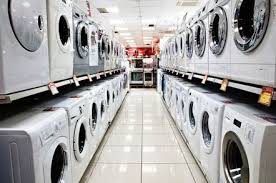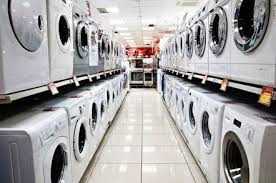
Samsung Electronics and LG Electronics has hoped to avoid the outcome of “America First” manufacturing and jobs mantra of President Donald Trump when the South Korean companies announced plans last year to set up home appliance factories in the United States.
But that does not appear to be the case as the U.S. government last week decided to impose an import tariff of up to 50 percent for washing machines and other key components brought into the country from outside.
Officials from the companies and the South Korean government said that investment across other industries has bene threatened, supply chain s upended and a long-running trade dispute has bene compounded by the imposition of hefty tariffs on components in particular.
“It’s unprecedented and excessive, and will set alarm bells ringing for other companies doing businesses in the United States,” said one Samsung official to the media who did not want to be named.
According to the executive, a “worst case” scenario has bene created by the surprise ruling even as the companies had made investments in hundreds of millions of dollars for construction of factories and creating jobs to South Carolina and Tennessee.
Samsung expects that the factory would be ready for production at full capacity of key part by end of the year and till then it has to make use of imported parts, he company said.
The new production lines of Samsung may need supply chain flexibility which is denied by the tight quota on overseas-made parts. The company is heavily dependent on large manufacturing bases in low-cost countries like Vietnam.
Other manufacturers and suppliers are also getting jittery by the ruling on a quota for foreign components.
“Even if you bring your tier-1 supplier with you to ... the U.S. manufacturing facilities, your tier-1 suppliers will have tier 2 and 3 suppliers which would source components from abroad. It makes it very complicated to calculate,” a senior executive at Korean automaker Hyundai Motor told the media.
“You’ve got to find a way to adapt or circumvent somehow.”
And for producers of intermediary goods such as South Korean battery-to-chemicals group SK, the ruling was also bad news, said an executive of the company. Big manufacturers are supplied with thousands of components by SK and those would now get caught up in the fight.
Because now LG Electronics Inc would produce components in-house, suppliers like privately owned Dongjin Techwin, of LG is already bracing for losses in contract.
“There’d be little point on trying to figure out how to export components from Korea to the United States, and then build a washing machine there,” Jung Hyun-mo, a senior executive at Dongjin, told the media. “There just isn’t the export-import supply chain in place for that.”
Last year imports were “a substantial cause of serious injury to domestic manufacturers” including Whirlpool Corp, found the U.S. International Trade Commission. The Trump government decision in the “Section 21” safeguard case came after that disclosure.
The ITC had recommended a 20 per cent tariff set in the first year on the first 1.2 million imported large residential washers and subsequently impose a 50 per cent tariff on additional imports. Bu the tariffs imposed far exceeded those suggestions.
The U.S. government has also levied a 50 per cent tariff on imported key parts that are over 50,000 units in the first year. Samsung says that the move would “cut us off at the knees”, a manager of the company’s South Carolina plant told the media privately.
“Although we are installing production equipment and we are committed to producing the major parts in-house, there will be a transition period during which importing parts will be necessary to successfully launch this facility,” Tony Fraley, Samsung’s plant manager, told the commission in October.
(Source:www.reuters.com)
But that does not appear to be the case as the U.S. government last week decided to impose an import tariff of up to 50 percent for washing machines and other key components brought into the country from outside.
Officials from the companies and the South Korean government said that investment across other industries has bene threatened, supply chain s upended and a long-running trade dispute has bene compounded by the imposition of hefty tariffs on components in particular.
“It’s unprecedented and excessive, and will set alarm bells ringing for other companies doing businesses in the United States,” said one Samsung official to the media who did not want to be named.
According to the executive, a “worst case” scenario has bene created by the surprise ruling even as the companies had made investments in hundreds of millions of dollars for construction of factories and creating jobs to South Carolina and Tennessee.
Samsung expects that the factory would be ready for production at full capacity of key part by end of the year and till then it has to make use of imported parts, he company said.
The new production lines of Samsung may need supply chain flexibility which is denied by the tight quota on overseas-made parts. The company is heavily dependent on large manufacturing bases in low-cost countries like Vietnam.
Other manufacturers and suppliers are also getting jittery by the ruling on a quota for foreign components.
“Even if you bring your tier-1 supplier with you to ... the U.S. manufacturing facilities, your tier-1 suppliers will have tier 2 and 3 suppliers which would source components from abroad. It makes it very complicated to calculate,” a senior executive at Korean automaker Hyundai Motor told the media.
“You’ve got to find a way to adapt or circumvent somehow.”
And for producers of intermediary goods such as South Korean battery-to-chemicals group SK, the ruling was also bad news, said an executive of the company. Big manufacturers are supplied with thousands of components by SK and those would now get caught up in the fight.
Because now LG Electronics Inc would produce components in-house, suppliers like privately owned Dongjin Techwin, of LG is already bracing for losses in contract.
“There’d be little point on trying to figure out how to export components from Korea to the United States, and then build a washing machine there,” Jung Hyun-mo, a senior executive at Dongjin, told the media. “There just isn’t the export-import supply chain in place for that.”
Last year imports were “a substantial cause of serious injury to domestic manufacturers” including Whirlpool Corp, found the U.S. International Trade Commission. The Trump government decision in the “Section 21” safeguard case came after that disclosure.
The ITC had recommended a 20 per cent tariff set in the first year on the first 1.2 million imported large residential washers and subsequently impose a 50 per cent tariff on additional imports. Bu the tariffs imposed far exceeded those suggestions.
The U.S. government has also levied a 50 per cent tariff on imported key parts that are over 50,000 units in the first year. Samsung says that the move would “cut us off at the knees”, a manager of the company’s South Carolina plant told the media privately.
“Although we are installing production equipment and we are committed to producing the major parts in-house, there will be a transition period during which importing parts will be necessary to successfully launch this facility,” Tony Fraley, Samsung’s plant manager, told the commission in October.
(Source:www.reuters.com)





